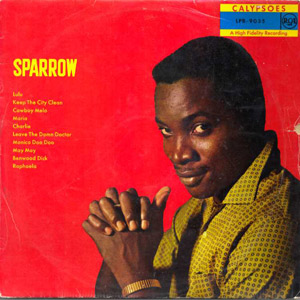|
by Mark Rogers
For most Americans calypso music is stuck in time back in the 50s, with Harry Belafonte belting out “Day-O" (the Banana Boat Song), while party-goers struggled to pass under the limbo stick. Calypso was actually a musical force in the Caribbean decades earlier than the 50s, when legendary musicians like Roaring Lion and Attila the Hun sparred verbally in calypso contests, trying to best all comers with the cleverness of their rhymes. 
Calypso is rooted in African rhythms, but it also contains traces of English folk music. Early calypso instrumentation relied on acoustic instruments like the banjo and guitar, accompanied by all manner of percussion. The lyrics were often inspired by local events and served as street-level commentary on the doings of the day. Given calypso’s penchant for songs laced with sexual innuendo and reports from the street, it’s often compared to present-day rap and hip hop.
Calypso’s earliest roots were in Trinidad, although it’s now considered a Caribbean-wide musical expression. 1944's jaunty “Rum and Coca-Cola” by the Andrews Sisters was actually a version of a Lord Invader calypso. In the Andrew’s Sisters’ sunny version you’d never know that Lord Invader was actually decrying the evil influence American military bases were having on Trinidad society at the time, by encouraging prostitution and boosting inflation.
Today, like almost all music in the Caribbean, calypso is kept alive by fusion with other forms of music, like reggae, soca and soca chutney. Purists revel in the new calypsos providing social and political commentary, while party-goers shake their tail feathers to calypso tunes like Machel Montano’s and Beenie Man’s “Outta Space.”
Click HERE for a film of the Mighty Sparrow telling the story of how he came to write his famous calypso song “Jean and Dina”, which covers some of the same ground as Lord Invader’s “Rum and Coca-Cola.” |